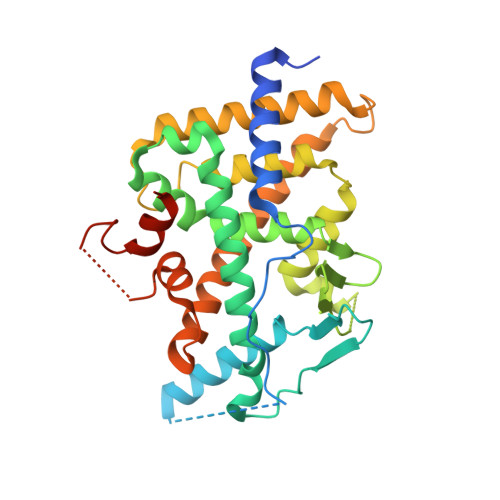Pregnane X receptor agonist nomilin extends lifespan and healthspan in preclinical models through detoxification functions.
Fan, S., Yan, Y., Xia, Y., Zhou, Z., Luo, L., Zhu, M., Han, Y., Yao, D., Zhang, L., Fang, M., Peng, L., Yu, J., Liu, Y., Gao, X., Guan, H., Li, H., Wang, C., Wu, X., Zhu, H., Cao, Y., Huang, C.(2023) Nat Commun 14: 3368-3368
- PubMed: 37291126
- DOI: https://doi.org/10.1038/s41467-023-39118-9
- Primary Citation of Related Structures:
7YFK - PubMed Abstract:
Citrus fruit has long been considered a healthy food, but its role and detailed mechanism in lifespan extension are not clear. Here, by using the nematode C. elegans, we identified that nomilin, a bitter-taste limoloid that is enriched in citrus, significantly extended the animals' lifespan, healthspan, and toxin resistance. Further analyses indicate that this ageing inhibiting activity depended on the insulin-like pathway DAF-2/DAF-16 and nuclear hormone receptors NHR-8/DAF-12. Moreover, the human pregnane X receptor (hPXR) was identified as the mammalian counterpart of NHR-8/DAF-12 and X-ray crystallography showed that nomilin directly binds with hPXR. The hPXR mutations that prevented nomilin binding blocked the activity of nomilin both in mammalian cells and in C. elegans. Finally, dietary nomilin supplementation improved healthspan and lifespan in D-galactose- and doxorubicin-induced senescent mice as well as in male senescence accelerated mice prone 8 (SAMP8) mice, and induced a longevity gene signature similar to that of most longevity interventions in the liver of bile-duct-ligation male mice. Taken together, we identified that nomilin may extend lifespan and healthspan in animals via the activation of PXR mediated detoxification functions.
Organizational Affiliation:
School of Pharmacy, Shanghai University of Traditional Chinese Medicine, Shanghai, 201203, China.

















